Class 90s have experienced a chequered career, alternating from zero to hero and back again several times, as David Clough explains.
In this article:
- Designed for both passenger and freight, Class 90s offered flexibility across the rail network.
- Early technical issues were resolved, enhancing their reliability and operational performance over time.
- Advanced features like automated control systems improved safety, efficiency, and driving experience.
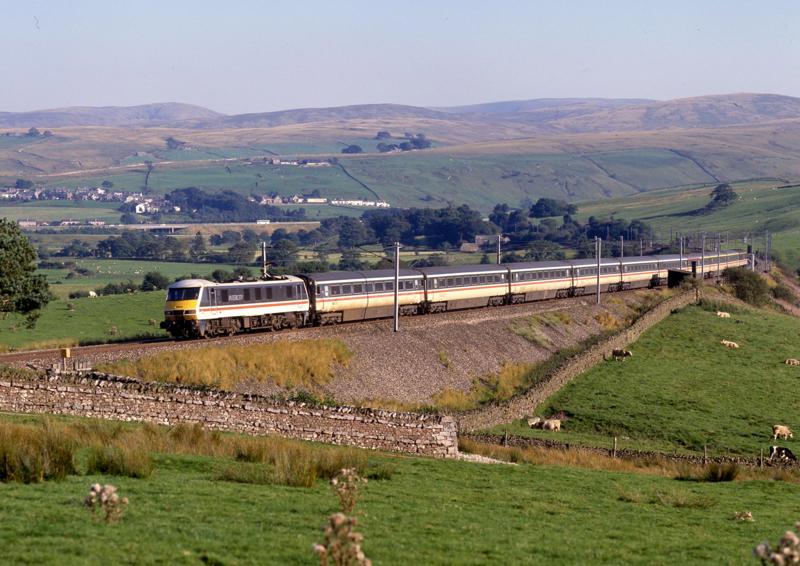 Plans for the type of traction required for inter-city electric services were fluid during the first half of the 1980s.
Plans for the type of traction required for inter-city electric services were fluid during the first half of the 1980s.
One reason was that the Advanced Passenger Train (APT) in prototype form was under development, with entry to traffic always just round the corner. At the start of the decade, APT was regarded as the train for all routes, as and when electrification was extended.
The division of BR into business units (called sectors) in 1982 created the InterCity Sector, which had to be profitable and whose director had different priorities to his predecessor, the Chief Passenger Manager.
There was, however, one constant in all the financial appraisals for new electric locomotives - the baseline was always Class 87.
This class had been ordered for the extension of West Coast Main Line (WCML) electrification from Weaver Junction to Glasgow, and had been introduced from 1973.
Rated at 5,000hp, the 35 examples were built by British Rail Engineering and had GEC Traction Ltd electric equipment, and were viewed as successful.
A 36th was equipped with GEC’s electronic power control equipment and had separately exited traction motors that offered superior traction control to traditional motors. This locomotive was classified as Class 87/1 and numbered 87101.
As the years rolled by, two issues had become increasingly pressing as delays to APT mounted.
East Coast electrification was authorised in 1984 and included the provision of 31 Class 91s (as part of the InterCity 225 trainset) and 31 mixed-traffic Class 87/2s. In December 1983, BR had committed to the production of IC225 in place of the APT for both the East Coast and the WCML.
Meanwhile, the surviving 60 (at that date) first-generation electrics of Classes 81-85 were becoming very unreliable and needed replacing.
But what of the WCML’s requirements without these life-expired first-generation AC electrics?
A strategy paper in March 1984 stressed the importance of minimising the types of traction unit to meet not just InterCity’s needs, but also those of the Freight and Parcels Sectors.
The forecasts in the Traction Policy paper envisaged 25 mixed traffic Class 87/2s for the WCML from 1986-88, eight pre-production Class 91s also for the WCML by 1986, and four unspecified locomotives for freight and mixed traffic work over the North London line (NLL) electrification scheme from the WCML to Stratford (east London) by 1988.
This fill-in electrification scheme was conceived to connect Ipswich (for Felixstowe), Harwich and north Thameside to Willesden and the WCML, modified to include a connection with the East Coast.
The Class 87/2 was to be similar in design to 87101 and serve as a short-term replacement for Classes 81-85, but not specifically as an InterCity machine, with that Sector’s requirements met elsewhere at this date by Class 91s.
The performance characteristic required hauling 750-tonne freights over Shap and Beattock and 1,080 tonnes south of Crewe, and it was to cause no greater track wear than a Class 87. The standard BR cant deficiency of 4½ degrees was deemed sufficient for the planned duties, as was a 100mph top speed.
On January 16 1984, BR’s Business Engineering Group asked the Director of Operations to prepare an investment submission for 25 locomotives to replace 37 examples of Class 81-85 - and this was when the concept first moved beyond merely serving as a financial appraisal comparator.
The building of Driving Van Trailers for push-pull passenger operation or IC225s on the WCML would permit elimination of all the remaining ‘81s’ and ‘85s’.
But what of Class 89 - a prototype of which was under construction by Brush Traction?
This design, if replicated, was now seen as purely for East Coast use, for two reasons.
Firstly, its gearing for 125mph limited its haulage capability over the northern banks to an inadequate 650 tonnes. Secondly, it had a maximum cant deficiency of 4½degrees, whereas the APT and the plan for Class 91 specified nine degrees to cope with WCML curvature.
On October 17 1984, the BR chairman wrote to the Minister of Transport, requesting authority to procure 25 Class 87/2s for the WCML. A submission for four ‘87/2s’ for the North London Line was already with the Minister.
More testing had established a higher load factor of 945 tonnes northbound and 1,150 southbound over the WCML northern banks, and so the Freight Sector dropped its proposal for an 80mph Class 88 Co Co electric freight locomotive.
Before this, on April 27, the Department of Transport had authorised 31 Class 87/2s as part of East Coast electrification for both InterCity and Freight Sector work.
The freight duties covered Freightliner services that served Aberdeen, Edinburgh, Newcastle and Hull terminals, and the Speedlink Distribution network. Two of the 31 were for the Parcels Sector.
The cornerstones of the Class 87/2 design were to be minimal technical risk, a short timescale, and a driving cab at each end of the locomotive.
The success of the Class 87s decided BR in favour of a preference for the same G412BZ traction motor and gearbox used in 87101, and it wanted to buy these from GEC and supply them as ‘free issue’ to the successful bidder. But GEC would not agree to this - it wanted to supply direct.
BR also preferred use of the Class 87 bogie, so that the bogies and bogie-mounted traction motors would be interchangeable with Class 87/0s. Had BR’s engineers overlooked that Class 87/0s had a completely different transformer and motor control arrangement and traction motors to 87101, which employed thyristors in control of the G412BZ motors, which must have made the practicality of interchangeability impossible?
Changes in UIC (International Union of Railways) requirements for new locomotives imposed the need for a stronger cab, and this allowed styling to be updated, as was the cab interior and equipment.
The new cab did not have a droplight window for driver lookout when shunting. This fact was overlooked until during construction, when ancillary driving positions had to be added adjacent to the driver’s cab doors.
To save time during the tendering process, BR opted to issue documents to just British Rail Engineering Ltd (BREL), Brush Traction and GEC Transportation Projects.
The tender permitted bidders to offer alternative designs to the use of Class 87 bogies and GEC traction motors, provided these met the BR performance specifications, and that the proposed locomotive was of proven reliability or came with such guarantees. The haulage performance involved hauling 945-tonne freights over the northern banks and a top speed of 110mph.
Of note in the specification was the requirement to “accommodate occasional over-speed up to 120mph”. The specified maximum cant deficiency was raised from the previous norm of 4½ degrees to six degrees. Annual mileages of up to 220,000 were envisaged.
In June 1985, BR’s Design Panel proposed that the locomotives have front-end styling identical to Class 91s. The Freight Director agreed that all 29 should receive InterCity livery to aid inter-changeability across the fleet, but this changed when the Freight Sector went through a rebranding in 1987 and the subsequent allocation of electric locomotives to dedicated Sectors.
Tender documents were issued in May 1985 and a contract with BREL and GEC as main sub-contractor was issued on January 23 1986 for 29 locomotives.
As a result of several reviews that led to the closure of three Freightliner terminals, and a pruning of the Speedlink network, Freight Sector requirements for the East Coast had been cut by ten to 19.
With two for Parcels, 21 were ordered for the East Coast, and a contract was issued on October 20 1987. InterCity was the sponsoring Sector for the whole project.
Although conceived as an updated version of 87101, changes to the styling and the marketing advantages of a ‘new’ locomotive brought the decision on July 9 1987 to reclassify the design as Class 90. Several points are worth noting.
More modern thyristor electronics (of GEC design) than had been developed in 87101 were used.
A Doppler radar was fitted for accurate speed measurement, and this meant when all wheels were slipping, this could be identified and corrected. When wheelslip in just one, or all four, traction motors was detected, the control system cut power to stop the slipping and then reapplied it gradually.
Being a Bo Bo four-axle machine, transmitting high power under poor rail conditions remains a problem even for similar designs produced today, and this explains why sanding gear was fitted.
An automatic speed limiter allowed the driver to set the desired maximum speed on a cab dial up to the 110mph design maximum, and this rate cannot be exceeded when the locomotive is driven from the cab. It did not have cruise control fitted.
Motor power was controlled by a microprocessor, which was calibrated to the motor’s prescribed characteristic. This meant a more consistent performance than hitherto. Rheostatic braking equipment used the motors to supplement the air brakes.
Several changes were added during the design and construction phase.
To safely raise the load limit north of Crewe from 950 to around 1,100 tonnes, a traction motor temperature dial was added. Like the driver’s ammeter, this had green, yellow and red zones to indicate to the driver when motor overheating was occurring and to reduce power.
The time division multiplexer system for remote control of traction had been adopted, and Class 90s were fitted with this from new. It was used for operating locomotives in multiple, or driving from a vehicle such as a Driving Van Trailer, which was appearing on WCML passenger workings.
At 84½ tonnes, the class was slightly heavier than the Class 87. It had a train heating index of 95, which reflected the increased demand from contemporary coaching stock.
Delivery dates are problematic, because sometimes this refers to handover of a completed locomotive, sometimes following commissioning, and sometimes when accepted for traffic. The dates in the BR project engineer certificate of project completion are:
| Planned |
Actual |
|
|---|---|---|
| 90001 | December 19 1987 | December 17 1987 |
| 90050 | July 27 1989 | August 31 1990 |
From February 1988, Class 90s had to compete with Class 91s for BR resources associated with testing and trial running - not least because both were built at Crewe Works. The Class 91s’ higher profile meant they were always prioritised.
Delivery was halted three times during construction, owing to locomotives failing to meet the contractual reliability target of 6,000 miles, when newly built, without a technical failure. The final delivery was 90049 on September 28 1990 - 62 weeks late.
The contractual performance was 73,000km (45,500 miles) per casualty and 87.5% availability. By June 1993, the class was exceeding this figure and was possibly the most reliable locomotive on BR.
At the start of 1991, InterCity’s fleet proved to be only about half as reliable as those operating on freight work, and this dissuaded the Sector director from taking all 50 Class 90s in exchange for Class 86 types. But this disparity was soon resolved.
Class doyen 90001 served as a prototype for technical development, but subsequent builds were handed over without the evolving modifications being incorporated. They therefore had to return to Crewe for upgrading, which then required a fresh shakedown period without a failure.
This meant that some locomotives could be used in service, some could be used to test the new Driving Van Trailers, and some could be used for driver training, while some could not be used at all. The problem for the operators was a constant changing of locomotives in each category.
For the record, the first use on a scheduled passenger train came on July 12 1988, when 90003 was taken off crew training at Preston to replace a failure on a Euston-bound working.
InterCity put six Class 90 diagrams in place from November 1 1988, to be covered by eight locomotives, and this proved to be optimistic. By May 1989, there were still only six diagrams.
Closure of the Speedlink network in 1991 cut Railfreight Distribution’s need for Class 90s.
Nevertheless, the Sector had embarked on a dedicated Class 90 policy. This saw the last 25 renumbered to 90126-150, with removal of the electric train supply jumper cables, buckeye replaced by screw couplings, the removal of vestibule buffers, and the imposition of a 75mph maximum speed. Railfreight’s 90021-025 remained as Class 90/0s for potential hire by the other Sectors, although 90025 became 90125 in 1993.
An under-reported sidelight came when the East Coast franchise operator needed to hire in Class 90s as cover for Class 91s in 1992-93.
A relieving driver of an Up service was not informed that the propelling locomotive was a ‘90’ and not a Class 91 (and so limited to 110mph), and he drove at up to 125mph.
GEC was consulted and informed BR that such a speed would not be detrimental because the traction motor gearing would cope with up to 135mph.
During the period when Class 90s deputised on the East Coast, 90021-025 were passed for 125mph and received double maintenance to running gear. This temporary uplift was not used during Class 91 refurbishment in 2011, when Class 90s deputised again.
In 1995, InterCity’s fleet was sold to Porterbrook Leasing Co Ltd, while the Rail Express Systems (formerly Parcels) and Railfreight ‘90s’ (90016-140) were bought by Wisconsin Central as part of its English Welsh & Scottish Railway (EWS) operation.
The last ten became Freightliner machines, and these were sold to Porterbrook and leased back before again becoming Freightliner property.
InterCity based its fleet at Willesden, while Freight and Parcels machines were allocated to Crewe Electric Depot. When InterCity’s fleet moved to Greater Anglia, there was a reallocation to Norwich Crown Point.
More recently, Freightliner has established a maintenance facility at Crewe Basford Hall and its ‘90s’ are now allocated there.
Gradually, Class 90/1s reverted to their original numbers, but it took until 2004 for 90147. The experimental fitting of composite brake blocks to nine EWS locomotives led to their being renumbered into Class 90/2 for a period during 2001-02.
The arrival of Class 390 ‘Pendolinos’ for Virgin West Coast services saw 90001-015 replace Class 86 on Anglia work between Liverpool Street and Norwich from 2004, following trials using hired-in machines from Freightliner and EWS.
They lasted until displaced in 2020, when 90001/002 were sold to Locomotive Services Ltd and 90003-015 were taken over by Freightliner to replace Class 86s. 90001 worked the final diagram on March 24.
When the class migrated to Anglia, the reliability was described by Greater Anglia’s fleet manager as “atrocious”, primarily owing to faults with the TDM equipment. There were also engineering faults, with blame attributed to under-investment in reliability.
Attention in key areas brought a doubling of reliability. Over an eight-year period from arrival at Norwich, the locomotives and coaches went from a Moving Annual Average failure rate of 3,000 miles to 50,000.
The first casualty was in 2004, when 90050 suffered fire damage and has never worked again. It was on hire to EWS, which gave Freightliner 90016 in lieu, and is now an exhibit at Crewe Heritage Centre.
With its new Class 66s delivered, EWS became less interested in its Class 90s during the 2000s. By 2011, 12 were in long-term store, some sidelined for so long that they still retained Railfreight livery.
EWS examples were frequently hired to other operators, such as Caledonian Sleeper. In July 2023, DB Cargo (DBC), which now owned the former EWS, took its remaining locomotives out of traffic, claiming it was now too expensive to operate electric traction.
Freightliner had done similarly previously, before reinstating its electric fleet.
In September 2023, DBC offered 12 for sale, mainly long-stored machines. Freightliner bought 90018/040, which were the only ones in working order. The remainder were acquired for scrap and in July 2024, 90022 became the first to be cut up. DBC has subsequently offered the remainder of its Class 90 fleet for sale.
So, what did those who worked with the Class 90s think of the design?
Until he retired in November 2022, Jonathan Dunster was Avanti West Coast Director of operations.
“I worked in the Control at Euston when the Class 90s were introduced. My recollection of them is positive overall, as once the initial teething issues were sorted out, they were a reliable machine.
“I think drivers felt them less able than the ‘87s’ due to the thyristor control not allowing quite so much ‘manual driving’ techniques to be used.
“In my opinion, the Class 90s came into their own once the full-scale push-pull operation was introduced on the WCML using the Mk 3b DVTs, because having been designed for TDM working, they were far less prone to configuration issues than the Class 86s and ‘87s’, which had the equipment retro-fitted.”
A retired Longsight driver, who trained on the class from new, offers a footplate perspective: “Class 90s cabs were pleasanter working environments, and the thyristor control made driving easier in normal circumstances.
“However, as it required more effort to notch up power with a Class 87, so it was more satisfying to make one ‘go’.
“The ‘87s’ were clearly more powerful in the right circumstances, giving the interested driver a feeling of achievement. So, you can probably say that older drivers would not be as comfortable with the new layout and the response to movement of the power handle. Those from my generation were more able to adapt to the change.
“As long as the equipment maintaining the cab environment worked effectively, most drivers would prefer Class 90s.
“Personally, Class 90s were not as interesting to drive and the power available was neutered by the control system, so I would often curse if one was on the front of my train at Euston.
“If sustaining concentration was a challenge due to sleep issues or feeling under the weather, the ease of driving a Class 90 was appreciated.”
Both railwaymen say the Class 90 was inferior in power to an ‘87’, so what are the facts?
The answer lies in the inbuilt traction control of the two designs. Traction motor ratings are always quoted at the point where line volts and amps combine to be capable of being developed indefinitely to avoid the motor overheating. For short periods, motors can produce higher outputs, but at the risk of overheating.
The ammeters on the driver’s desk are marked in green, yellow and red to show the continuous, short-term and prohibited zones.
In Class 87/0s, drivers can control the current to the motors, but must avoid excessive levels by paying attention to the ammeter readings. This allows them to develop power beyond the continuous rating for short periods.
For passenger operation with Class 90s, the control system imposed lower limits, as explained below.
A retired GEC electrical engineer, who specialised in traction motors, comments: “The electro-magnetic detail of all the G412 motors was the same, except for the main field coils, and I think on the ‘90s’ they were the same as 87101.
“The continuous rating of the AZ motor on the ‘87/0s’ is 875kW, 1152V, 800A, which is very close to the ‘90s’ motor figure.
“I wouldn’t rely on the precise definition of any figures from manuals or publicity material. The ‘87s’ would have been capable of much higher outputs in the middle of their speed ranges, but this was clearly deliberately restricted on the ‘90s’.”
The motor curve for the Class 90 G412CY plots tractive effort against speed. According to GEC in 1991, “curve 9776T is a computerised curve showing tractive effort/speed per traction motor, the microprocessor controlling exactly to this curve if the line voltage is 24kV”.
This confirms that in Class 90s, GEC used the microprocessor to impose a lower short-term rating than on Class 87s, and this explains the observed inferiority of performance.
Both types had the same motor gearing and continuous rating speed, and above this speed the two classes should have performed similarly.
About the author: Contributing writer David Clough has been photographing Britain’s railways since the 1960s and writing about them from 1975. He has been a regular contributor to RAIL since January 1983 and is the author of 16 railway books.
For a full version of this article with more images and data, Subscribe today and never miss an issue of RAIL. With a Print + Digital subscription, you’ll get each issue delivered to your door for FREE (UK only). Plus, enjoy an exclusive monthly e-newsletter from the Editor, rewards, discounts and prizes, AND full access to the latest and previous issues via the app.


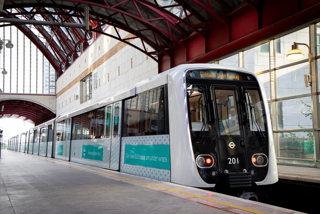
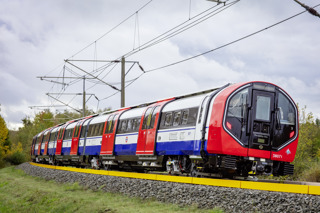


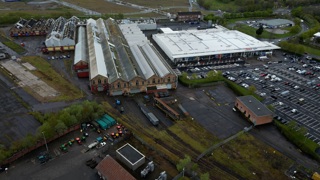

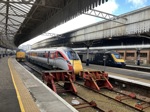
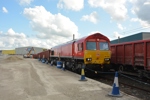

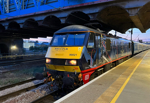

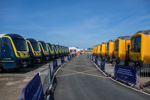

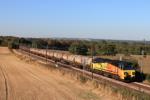


Login to comment
Comments
No comments have been made yet.